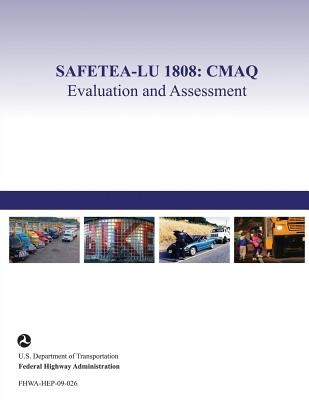
- We will send in 10–14 business days.
- Author: U S Department of Transportation
- Publisher: CreateSpace Independent Publishing Platform
- Year: 2015
- Pages: 78
- ISBN-10: 1505974267
- ISBN-13: 9781505974263
- Format: 21.6 x 28 x 0.4 cm, softcover
- Language: English
- SAVE -10% with code: EXTRA
Reviews
Description
In 1990, Congress amended the Clean Air Act (CAA) to strengthen National efforts to attain the National air quality standards. Among other strengthening provisions, the amendments required stronger coordination and linkages between transportation and air quality planning. Shortly thereafter, in 1991, Congress passed the Intermodal Surface Transportation Efficiency Act (ISTEA), which realigned the focus of transportation planning toward a more inclusive, environmentally sensitive, and multimodal approach. This included the Congestion Mitigation and Air Quality (CMAQ) Improvement Program, which was created to help fund transportation projects that reduce emissions. CMAQ was reauthorized in the Transportation Equity Act for the 21st Century (TEA-21) in 1998, and again in 2005 with the Safe, Accountable, Flexible, Efficient Transportation Act: A Legacy for Users (SAFETEA-LU). In 2007, in consultation with the Federal Transit Administration (FTA) and the Environmental Protection Agency (EPA), the Federal Highway Administration (FHWA) began a two-phased study as required by SAFETEA-LU Section 1808(f). Section 1808(f) calls for an evaluation and assessment of the direct and indirect impacts of CMAQ-funded projects on air quality and congestion levels to ensure the program's effective implementation. The following report presents results from the second phase of that study and should be read in conjunction with "SAFETEA-LU 1808: CMAQ Evaluation and Assessment, Phase I Final Report." The primary objectives of the Phase II study were to: Explore practices and approaches to CMAQ project selection and implementation. Provide information for use by local, regional, and State transportation agencies for the purpose of ensuring effective CMAQ implementation.
EXTRA 10 % discount with code: EXTRA
The promotion ends in 20d.10:32:22
The discount code is valid when purchasing from 10 €. Discounts do not stack.
- Author: U S Department of Transportation
- Publisher: CreateSpace Independent Publishing Platform
- Year: 2015
- Pages: 78
- ISBN-10: 1505974267
- ISBN-13: 9781505974263
- Format: 21.6 x 28 x 0.4 cm, softcover
- Language: English English
In 1990, Congress amended the Clean Air Act (CAA) to strengthen National efforts to attain the National air quality standards. Among other strengthening provisions, the amendments required stronger coordination and linkages between transportation and air quality planning. Shortly thereafter, in 1991, Congress passed the Intermodal Surface Transportation Efficiency Act (ISTEA), which realigned the focus of transportation planning toward a more inclusive, environmentally sensitive, and multimodal approach. This included the Congestion Mitigation and Air Quality (CMAQ) Improvement Program, which was created to help fund transportation projects that reduce emissions. CMAQ was reauthorized in the Transportation Equity Act for the 21st Century (TEA-21) in 1998, and again in 2005 with the Safe, Accountable, Flexible, Efficient Transportation Act: A Legacy for Users (SAFETEA-LU). In 2007, in consultation with the Federal Transit Administration (FTA) and the Environmental Protection Agency (EPA), the Federal Highway Administration (FHWA) began a two-phased study as required by SAFETEA-LU Section 1808(f). Section 1808(f) calls for an evaluation and assessment of the direct and indirect impacts of CMAQ-funded projects on air quality and congestion levels to ensure the program's effective implementation. The following report presents results from the second phase of that study and should be read in conjunction with "SAFETEA-LU 1808: CMAQ Evaluation and Assessment, Phase I Final Report." The primary objectives of the Phase II study were to: Explore practices and approaches to CMAQ project selection and implementation. Provide information for use by local, regional, and State transportation agencies for the purpose of ensuring effective CMAQ implementation.


Reviews